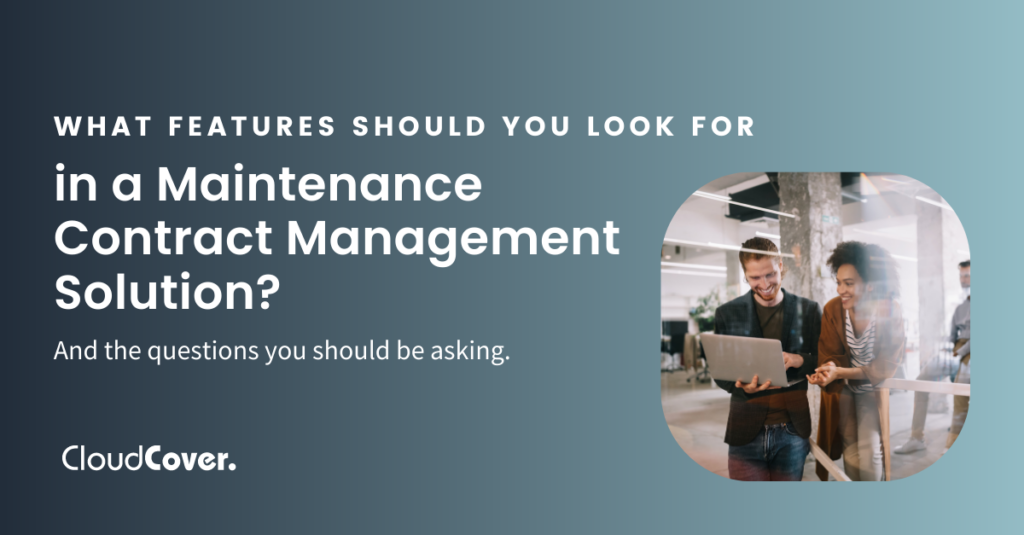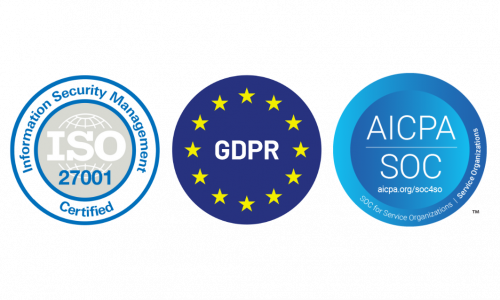
What Features Should You Look for in a Maintenance Contract Management Solution?
- 9 Minute Read
- #Contract Management
In this post:
A true maintenance contract management (MCM) platform should offer a number of clear benefits, most notably the ability to view all of your contracts (and their associated components) in an easy-to-understand dashboard. As such, it makes sense why so many TPM providers and value-added resellers are rushing to create their own “smart” software solutions to provide this type of comprehensive support.
All solutions are not created the same, however; and before you demo one of these options you should be prepared to ask the following critical questions about functionality:
Is the platform vendor-agnostic?
Unfortunately, many MCM solutions are not comprehensive. Their dashboard is tied to their maintenance services and won’t let you integrate ALL your TPM, OEM, and self-supported contract information in one place. This means your records are spread across multiple MCM solutions or crudely collated in an old-fashioned spreadsheet.
PRO TIP: Make sure you know which manufacturers are (and are not) supported by a platform and how that aligns with your own portfolio and that of your clients.
How do I get my data into the platform?
Data integration is obviously key to any maintenance management platform. You need to be able to import existing data in order to maintain IT asset visibility and ensure seamless maintenance support.
Before you upload data, though, some level of data cleaning may be advisable, as enterprise customers often have an array of complicated and possibly outdated data within their infrastructure inventory. Your maintenance management software provider should be able to work with you on gathering and validating your datasets and then adding custom fields as necessary. Be sure to ask what kind of assistance is provided at this stage and how hands-on you’ll need to be in getting data cleaned.
Once that process is complete, you’re ready for data integration—provided the maintenance management solution has an open API to facilitate interoperability between data exchange tools and manage the flow of information between systems. Without an open API, data simply isn’t going to move smoothly and will likely require manual input and additional formatting.
PRO TIP: It’s critical to find out whether your software has an open API. A new tool should solve problems, not create them.
How quickly will I be able to access my data?
Data integration is only the beginning of your relationship with a new platform. What you’re really looking for are results—and they shouldn’t take long to see if the tool is constructed intelligently.
Ask for specifics about how long data integration and software onboarding will take and how long after that it will take to begin seeing proof of value. If you’re not getting a clear response, it may be a sign to look at a different solution provider.
Does the software integrate with the rest of my technology stack?
Software integration is just as important as data integration, which is another reason having an open API is critical. Any effective maintenance management software solution should be able to share data with other enterprise software packages, and otherwise seamlessly run with CRMs, ERPs, and the rest of your technology stack.
How secure is the platform?
Data security is obviously important on any platform, but it’s absolutely critical for maintenance management software, which will naturally contain detailed operating information about IT assets.
If the maintenance management solution is cloud-based, ensure that:
- Two-factor authentication is required for all login attempts
- IP restrictions are in place to limit logins from unknown locations
- Data centers are protected by top-tier physical security and environmental controls
Even if it’s not cloud-based, it’s still important to confirm that access is limited to key personnel and that any activity is tracked and accounted for. In short, you want to ensure that the vendor is using the same multi-layered security approach you use to protect your own systems
Can I customize the product? Can I offer it to my end users?
VARs are increasingly providing at least some form of managed services, as these offerings present a clear, recurring revenue opportunity.
If you’re going to resell another provider’s platform to create a new managed service revenue opportunity of your own, it will be most effective if you can put your own branding on the dashboard and customize the service as needed for your end users. But not all service providers will allow you to white-label the technology as your own, and others make it difficult for you to offer the solution to your end users.
PRO TIP: You should always ask about the specifics of customization and whether there would be any challenges in rebranding and reselling.
What level of support will my company receive?
If you’re looking to offer the platform as a managed service, seek assurance that the software vendor will provide the same level of technical support to your end users that they give to you as a client.
What kind of data tracking and automation is included?
Robust data tracking is necessary to provide line-of-sight on contract renewal windows. Just tracking this info is not enough, though. Ideally, you want to be receiving customized alerts for each and every upcoming renewal, beginning at least 90 days in advance.
How does the vendor’s artificial intelligence offering benefit my business, specifically?
Anyone who has worked with AI can tell you that the technology is not a unique or valuable service offering by itself. AI’s value is functional—that is to say, in the problems that it solves. If a company is just selling you bells and whistles (like the “the chance to work with state-of-the-art technology” or “the opportunity to apply machine learning to your datasets”) without defining what those terms mean and specifying how they solve specific business problems, you should be skeptical.
(For an example, read: When Good AI Goes Bad in Your IT Services Provider)
PRO TIP: It’s important to ask what problems the AI services being marketed are set up to solve and how those solutions will benefit your organization’s specific needs. Likewise, if AI is something you’re offering to end users, you should be able to explain in simple terms how the technology is going to solve their problems.
Would CloudCover be a better alternative?
Many of our customers came to us because they were looking for a way to get all of their contract maintenance data in one place. Our platform provides them with a simple intelligent dashboard view, regardless of the manufacturer, location, or type of equipment. At the same time, they recognized that offering a that comprehensive solution to their own customers extended their value and helped them add maintenance management as part of their managed services portfolio.
CloudCover was built as a partner for the Channel and your end-users. It seamlessly integrates with your existing software so you can see all of your contracts in one place. And it’s easy to white-label so you can offer the same easy-to-use system to your own customers.


